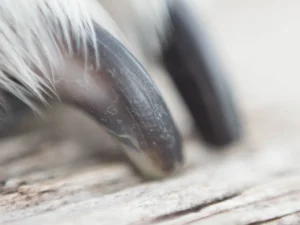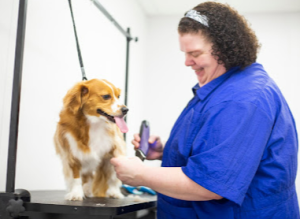How to Trim Dog Nails That Are Overgrown
In the world of pet care, nail trimming often takes a backseat, yet its significance cannot be overstated. In our comprehensive guide, we delve into the importance of nail trimming for dogs, how to trim dog nails that are overgrown, and what happens if you don’t trim your dog’s nails.
Join us as we explore the health risks, behavioral concerns, and safety implications associated with overgrown nails. Plus, we’ll provide invaluable tips and techniques for safely trimming your dog’s nails at home, including the necessary tools and a step-by-step guide.
What Happens If You Don’t Trim Your Dog’s Nails?
 It’s not about pampering; trimming your dog’s nails is essential to keeping your pup healthy. Without regular nail trimming, your pet can experience pain and discomfort from increased pressure when walking, running, or playing. This can also cause mobility issues, especially in older dogs, due to a lack of traction on hard surfaces such as tile or wood flooring.
It’s not about pampering; trimming your dog’s nails is essential to keeping your pup healthy. Without regular nail trimming, your pet can experience pain and discomfort from increased pressure when walking, running, or playing. This can also cause mobility issues, especially in older dogs, due to a lack of traction on hard surfaces such as tile or wood flooring.
Additionally, long nails can cause discomfort and even pain for your pet if they get stuck in carpets or furniture. Other dangers of not tending to their nails are infection and ingrown nails.
According to the ASPCA, a dog needs a nail trim when their toenails “just about touch the ground when the walk.” When you hear the click, click, click on the floor or get scratched one too many times, it’s time! All dogs are different, but on average they should be trimmed about once a month.
How to Trim Dog Nails That Are Overgrown
Tools Needed to Trim Your Dog’s Nails
- Nail clippers designed for dogs (guillotine-style or scissor-style)
- Styptic powder or cornstarch (to stop bleeding if you accidentally cut the quick)
- Treats or rewards for positive reinforcement
- Towel or blanket to help secure your dog during the process
- Optional: Dremel tool or nail grinder for smoother edges
The Step-By-Step Guide to Trimming Your Dog’s Nails
- Choose a calm and quiet environment for nail trimming.
- If your dog is anxious, start by desensitizing them to the sight and sound of the nail clippers.
- Gently handle your dog’s paws to get them accustomed to the sensation.
- Use the appropriate nail clippers and identify the quick (the pink area within the nail).
- Trim small amounts of the nail at a time, avoiding the quick.
- If you accidentally cut the quick and it bleeds, apply styptic powder or cornstarch to stop the bleeding.
- Reward your dog with treats and praise throughout the process to associate nail trimming with positive experiences.
Tips for Successful Nail Trimming
Desensitization and Training Techniques
- Gradually introduce your dog to nail trimming by touching their paws and providing treats.
- Use positive reinforcement, such as treats or praise, during and after each nail trimming session.
- Practice short sessions of handling and trimming to build your dog’s tolerance over time.
- Consider using a clicker or verbal cue to signal the start and end of the trimming process.
Regular Maintenance and Monitoring
- Schedule regular nail trimming sessions based on your dog’s individual needs (usually every 2-4 weeks).
- Monitor your dog’s nails for signs of overgrowth, cracking, or splitting.
- Keep an eye on the length and condition of the nails to prevent discomfort or injury.
- If you’re unsure about trimming your dog’s nails, consult a professional groomer or veterinarian for guidance and assistance.
Leaving Trimming and Grinding to the Professionals
Can You and Should You Trim Your Dog’s Nails at Home?
DIY nail trimming is an option if done correctly and safely. You must feel self-confident, especially if your dog is jittery or anxious. The right tools are essential, such as clippers designed specifically for dogs. You must understand the anatomy of your pet’s feet so that you don’t accidentally cut into the quick (the part with nerve endings that supplies blood to the nail). If you snip too close and accidentally cut into the quick, your dog will experience immense pain and bleeding, increasing the chance of infection. You know how it feels when you’re clipping your nails and you accidently trim too far and hit the cuticle? The pain is awful. If this happens with your pup, it’s not going to be next impossible for them to trust you to trim their nails the next time around.
Why You Should Visit The Dog Stop
Many pet owners opt to leave nail trimming to a professional to avoid injury and reduce stress on you and their pet. Trained pet techs and groomers can ensure the nails are correctly shaped because of their experience, confidence, and correct tools. The process is fast, inexpensive, and anxiety-free.
End Note:
Learning how to trim dog nails that are overgrown is vital for their overall well-being and safety. Understanding what happens if you don’t trim your dog’s nails can help your furry friend avoid various health risks and behavioral issues, which can impact your pet’s quality of life. By learning how to safely trim overgrown dog nails at home and implementing regular maintenance techniques, you can ensure your furry companion remains comfortable and happy.
However, recognizing when professional help is needed is equally important to address any underlying issues or concerns effectively. With proper care and attention, you can keep your dog’s nails in optimal condition, promoting their health and happiness for years to come.
Stop in your local The Dog Stop to schedule your pup for a nail trim or grind. With regular, professional trimming, you can be sure your pup’s paws will remain healthy and comfortable. It’s one less hassle you’ll have to worry about in life.

